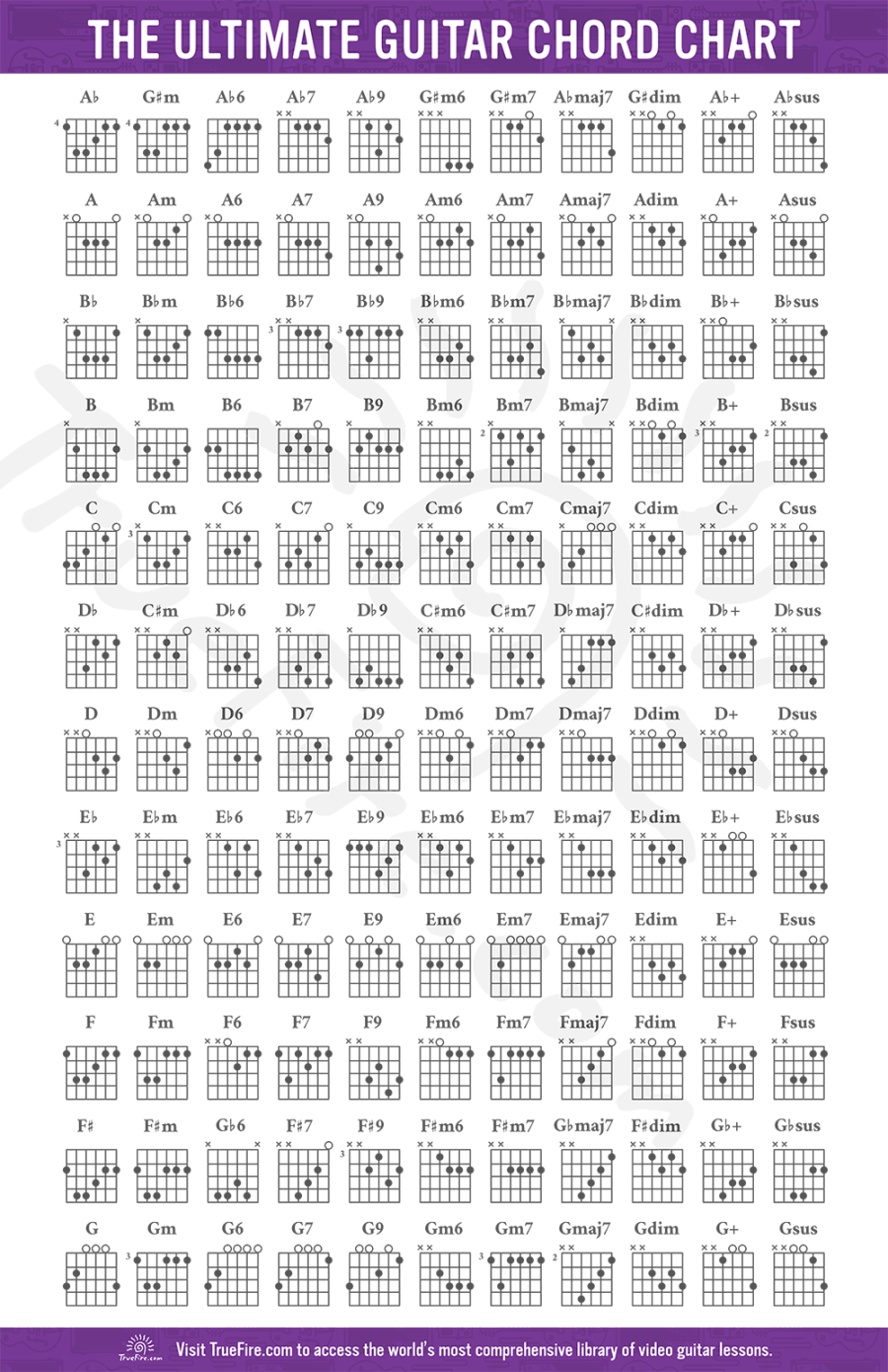Understanding Guitar Chord Charts: Your Musical Roadmap
Learning guitar can feel like navigating a vast, unknown territory. But fear not, aspiring strummer! One of the most essential tools in your musical arsenal is the humble guitar chord chart. It’s like a map, guiding you through the finger placements required to play those beautiful chords you hear in your favorite songs. Think of it as a visual language that translates musical theory into actionable instructions for your fingertips.
But what exactly is a guitar chord chart, and how do you read one? Let’s break it down in simple terms.
Understanding the Basics of a Chord Chart

Imagine the fretboard of your guitar laid out flat in front of you. That’s essentially what a chord chart represents. Most charts display six vertical lines, each representing a string on your guitar. The leftmost line is the thickest string (low E), and the rightmost is the thinnest (high E). Horizontal lines crossing these vertical lines indicate the frets.
Numbers or dots on the chart tell you where to place your fingers. A number usually indicates which finger to use (1 for index, 2 for middle, 3 for ring, 4 for pinky). Dots simply show you where to press down on the string. An “X” above a string means you don’t play that string, while an “O” means you play it open, without pressing down any frets.
Reading a Typical Chord Chart
Let’s take a simple example: the C major chord. You might see a chart that looks something like this (imagine it here, but I can’t draw a chart). The chart will show a dot on the 2nd fret of the D string, the 3rd fret of the A string, and the 1st fret of the B string. The other strings are played open. This tells you to place your fingers in those specific spots, and then strum all six strings.
It’s crucial to understand that chord charts are standardized. Once you understand the basic layout, you can read almost any chart you come across.
Common Chord Chart Variations and Symbols
While the standard format is prevalent, you might encounter variations. For instance, some charts might use colored dots instead of numbers. These colors often correspond to finger numbers, making it visually easier to follow.
Another variation is the inclusion of a “nut” symbol at the top of the chart. This indicates the start of the fretboard, helping you orient yourself. You might also see “barre” chords, where a curved line or a “B” indicates that you need to press down multiple strings with one finger.
Why Chord Charts Are Essential for Beginners
Chord charts are invaluable for beginners because they provide a visual and practical approach to learning chords. Instead of memorizing complex musical theory, you can simply follow the chart’s instructions. This allows you to start playing songs quickly and build your muscle memory.
Learning to read chord charts also helps you develop a deeper understanding of chord shapes and patterns. This knowledge is crucial for improvisation and songwriting.
Moving Beyond Basic Chords
As you progress, you’ll encounter more complex chords like seventh chords, minor chords, and augmented chords. Chord charts remain essential for these advanced chords, providing a clear visual representation of their fingerings.
You will also find chord charts that show the notes that make up each chord. This is beneficial for those wanting to understand the theory behind the music.
Tips for Using Guitar Chord Charts Effectively
Start with simple chords: Begin with basic chords like C, G, D, and E minor.
The Importance of Chord Charts for Song Learning
Most songbooks and online resources use chord charts to indicate chord progressions. This allows you to quickly learn your favorite songs without reading sheet music.
Chord charts are also instrumental in transcribing songs by ear. By identifying the chords used in a song, you can create your own chord chart and play along.
Conclusion: Your Key to Guitar Mastery
Guitar chord charts are more than just diagrams; they are essential tools for any guitarist, regardless of skill level. They provide a clear and concise way to learn chords, play songs, and understand the fundamentals of guitar playing. By mastering chord chart reading, you unlock a world of musical possibilities. So, grab your guitar, find a chord chart, and start exploring the vast and rewarding landscape of guitar music. They are your key to unlocking the music you want to play.

